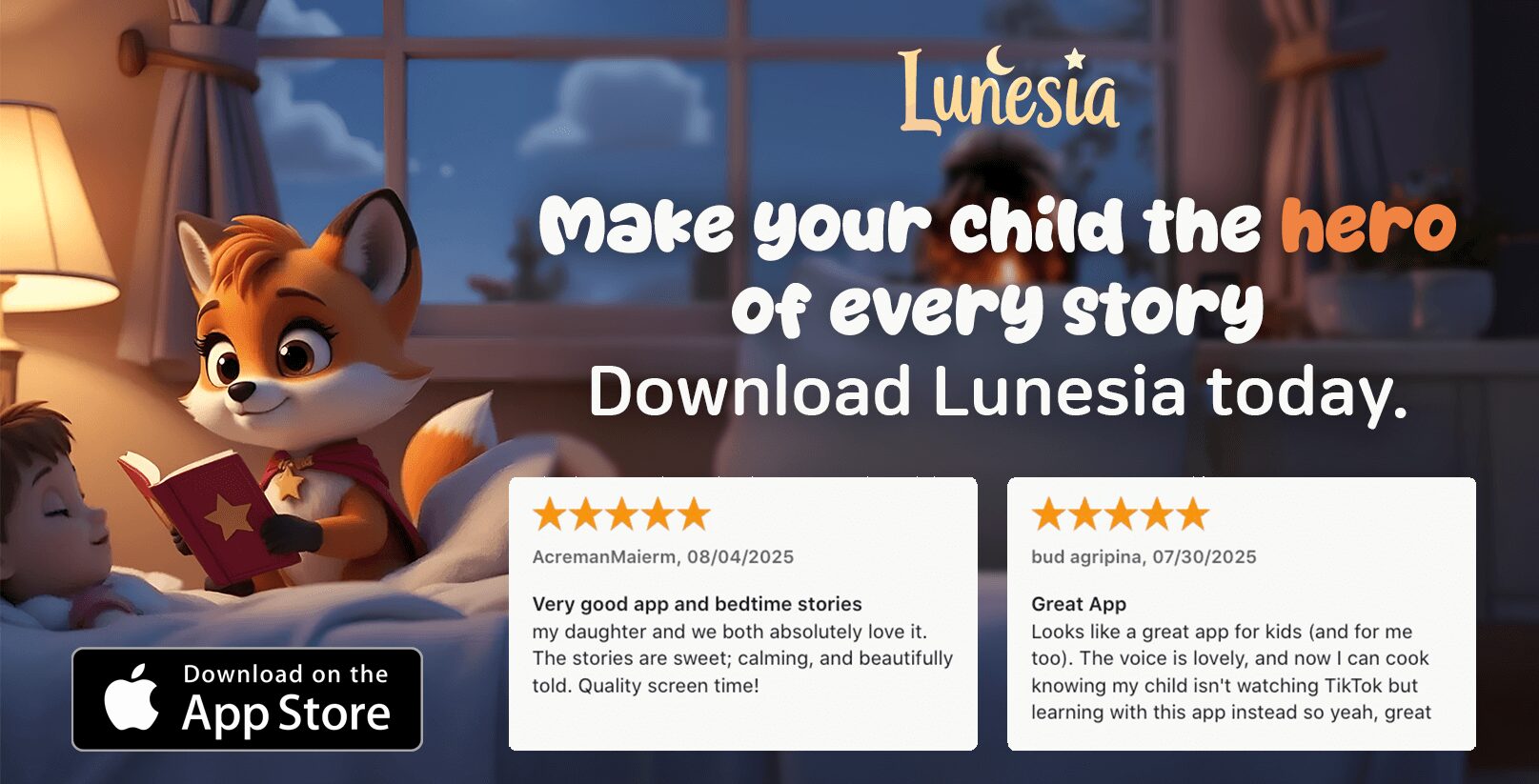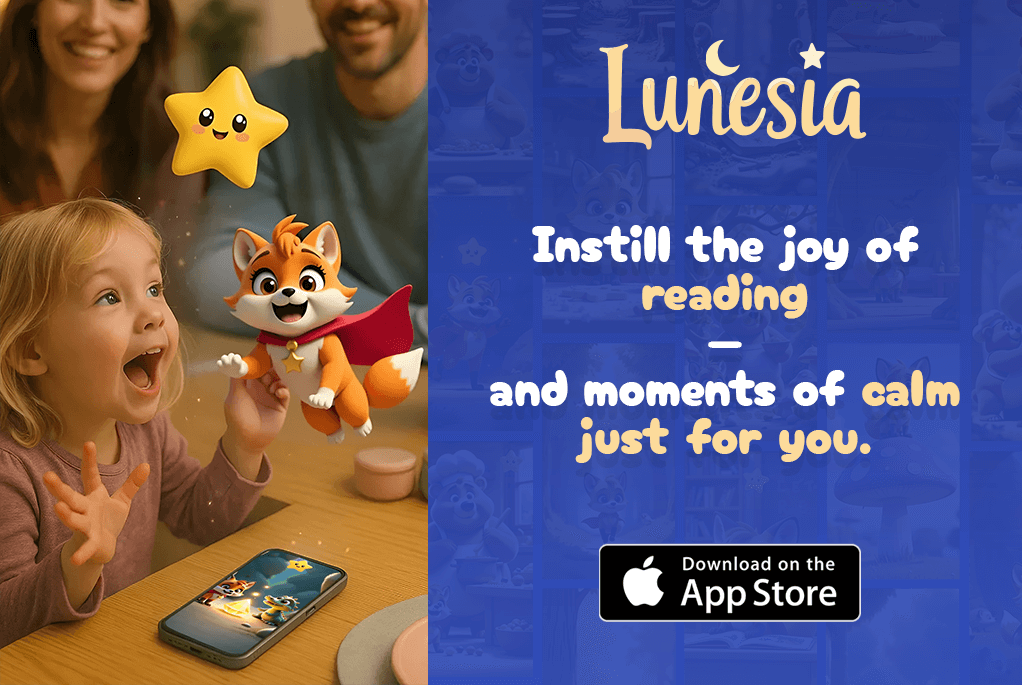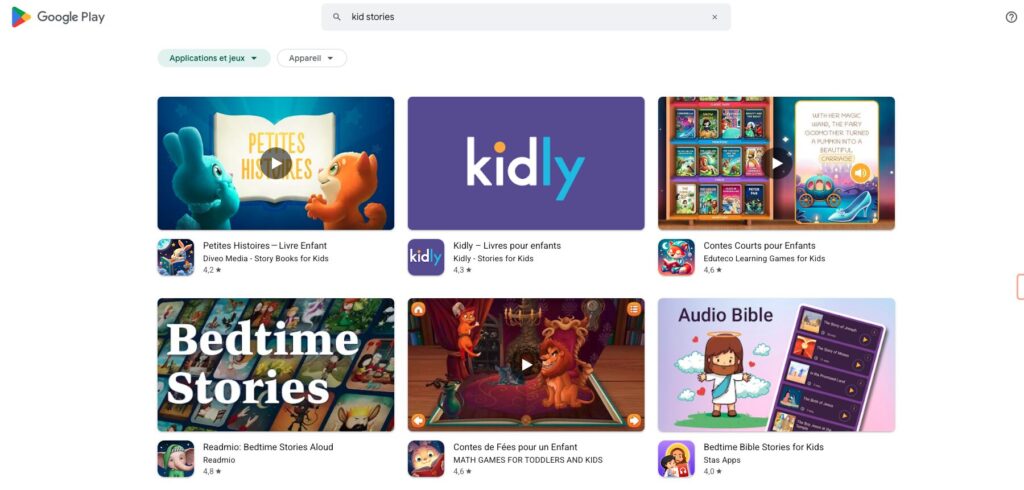As a parent, I’ve had my fair share of bedtime struggles. The nightly battles over sleep often left both my child and me exhausted. Then, I discovered something magical: storytime. It wasn’t just a routine; it became our secret weapon for navigating big emotions and finding calm.

There’s something uniquely powerful about tales that transport us to another world. They don’t just entertain; they help children process their emotions. Through imagination and relatable characters, stories create a safe space for kids to explore their feelings.
Neuroscience backs this up. When we read, our brains activate mirror neurons, which help us empathize and connect with the characters. This emotional processing is why bedtime stories are more than just a pre-sleep ritual—they’re a tool for building resilience.
In this article, I’ll share how therapeutic storytelling can transform your evenings. From rhythmic language patterns to character identification, these tales offer immediate calm and long-term emotional growth. Let’s dive in!
Why Calming Stories for Kids Are Essential
Every evening, I noticed how bedtime became a battleground for my little one. Tantrums, resistance, and tears were common. Then, I discovered the magic of bedtime stories. According to a 2024 AAP study, structured story routines can reduce bedtime resistance by 40%. That’s a game-changer for parents everywhere.
What makes these tales so effective? It’s their unique blend of predictable structure, soothing vocabulary, and positive resolutions. Relatable characters and sensory descriptions also play a key role. For example, The Little Cloud uses visualization techniques to reduce anxiety in preschoolers. It’s a powerful tool for emotional regulation.
Beyond calming nerves, these tales offer developmental benefits. They boost language acquisition and expand emotional vocabulary. A child learns to articulate feelings like joy, frustration, or fear. This skill is crucial for emotional growth and academic success.
Shared reading also strengthens the bond between parents and children. Studies show that oxytocin, the “love hormone,” is released during these moments. It’s a win-win for both parties.
How do calming tales differ from traditional fairy tales? Here’s a quick comparison:
| Feature | Calming Stories | Traditional Fairy Tales |
|---|---|---|
| Structure | Predictable and soothing | Often unpredictable |
| Vocabulary | Gentle and reassuring | Can include scary elements |
| Resolution | Positive and uplifting | May involve conflict |
Choosing the right tale for your child’s emotional needs is key. Look for stories that address their specific fears or challenges. As Dr. Emily Carter, a child psychologist, explains, “Narrative exposure therapy helps children process emotions in a safe, controlled way.”
Here’s a challenge for you: Tonight, observe how your child’s breathing changes during storytime. You might be surprised at the calming effect these tales can have.
How Calming Stories Transform Fears into Confidence
Watching my child face their fears taught me the power of storytelling. Tales with brave characters and gentle resolutions don’t just distract—they rewire young minds. Neuroscientists call this neuroplasticity: repeated positive narratives reshape how kids respond to fear.

The Magic of Gradual Exposure
Good Night, Farm Animals is a perfect example. Each page quiets another animal’s noise, teaching progressive relaxation. By the end, the child mimics the calm, just like the sleepy farm. It’s a bedtime ritual that builds confidence through predictability.
Visualization for Brave Dreams
The Little Cloud uses soft blue hues and floating imagery to guide kids into sleep. UCLA researchers found such metaphors boost children’s ability to self-soothe. Try describing clouds as “fluffy blankets” or “gentle hugs” to deepen the effect.
| Technique | How It Works | Example Phrase |
|---|---|---|
| Gradual Quieting | Reduces sensory overload | “The sheep’s ‘baa’ grows softer…” |
| Color Psychology | Triggers calm associations | “Pale blue sky whispers ‘rest’” |
Success story: A 7-year-old conquered darkness phobia by imagining the Night Under the Sky as a “starry blanket.” Parents, try mapping fears to story solutions with our free worksheet!
“Labeling characters as ‘brave’ instead of ‘scared’ shifts a child’s focus from fear to courage.”
Tonight, ask your child which character they’d be on a confidence journey. Their answer might surprise you!
Top Calming Bedtime Stories for Kids
Bedtime doesn’t have to be a struggle; the right tales can turn it into a peaceful ritual. Over the years, I’ve discovered two gems that have become staples in our nightly routine: Good Night, Farm Animals and The Little Cloud. These stories aren’t just entertaining—they’re tools for creating calm and fostering emotional growth.
Good Night, Farm Animals
This story uses a gradual noise reduction technique, starting with the loud mooing of cows and ending with the soft whispers of mice. It’s a proven method to help children wind down. Pairing the story with animal plushies can make it even more engaging. For example, hold a cow plushie during the mooing scene and switch to a mouse for the whispers.
The Little Cloud
Cloud imagery in this tale is scientifically linked to alpha brain waves, which promote relaxation. The soft blue hues and floating descriptions create a serene atmosphere. To enhance the experience, try pausing at key moments to guide your child through deep breathing exercises.
| Story | Age Suitability | Core Themes | Reading Time |
|---|---|---|---|
| Good Night, Farm Animals | 2-5 years | Gradual quieting, sensory engagement | 5-7 minutes |
| The Little Cloud | 3-6 years | Visualization, relaxation | 6-8 minutes |
“These stories cut our bedtime routine by 25 minutes. My child now looks forward to storytime as much as I do.”
For a cross-cultural twist, explore Japanese Oyasumi traditions, which emphasize gentle storytelling. And don’t forget to download our printable farm animal checklist to make reading interactive and fun!
The Role of Nature in Calming Stories
Nature has always been a source of comfort and wonder, especially for children navigating big emotions. Stories set in natural environments, like The Old Oak Tree, tap into this innate connection, creating a sense of security and calm. The forest, with its towering trees and gentle creatures, becomes a sanctuary where kids can explore their feelings.
According to biophilia theory, humans are naturally drawn to nature. This deep-rooted bond explains why natural settings resonate so powerfully with children’s psyches. The Old Oak Tree story, for instance, uses the tree’s roots to symbolize grounding and its branches to represent growth. This duality helps kids feel both secure and inspired.
The Old Oak Tree
In this tale, the oak tree shelters various forest animals, offering them safety and warmth. The story’s structure mirrors the ecotherapy practice of forest bathing, which has been shown to reduce cortisol levels by 12.4%. By immersing children in the world of the oak tree, the story fosters a sense of peace and belonging.
“Tree imagery in stories can lower cortisol levels and improve mood, making it a powerful tool for emotional regulation.”
Here’s a quick comparison of tree symbolism across cultures:
| Culture | Tree Symbolism |
|---|---|
| Norse | Yggdrasil: The world tree connecting realms |
| Buddhist | Bodhi Tree: Enlightenment and wisdom |
| Native American | Tree of Life: Harmony and balance |
For a hands-on activity, try creating personalized tree stories using elements from your backyard. Collect leaves, twigs, and stones to craft a visual narrative. Pair this with nature soundtracks, like rustling leaves or chirping birds, to enhance the atmosphere.
Nature’s beauty and tranquility make it the perfect backdrop for stories that soothe and inspire. Whether it’s the sheltering oak or the whispering pines, these tales remind us of the healing power of the natural world.
Calming Stories for Neurodivergent Kids
Finding the right tools to support my child’s unique needs has been a journey of discovery. Stories, especially those designed for neurodivergent kids, have become a cornerstone of our routine. These tales aren’t just entertaining—they’re tailored to foster learning, emotional growth, and skill-building.

Using an NCTSN-approved framework, these stories address trauma-informed storytelling. They’re crafted to meet the sensory and cognitive needs of children with ASD, ADHD, and other neurodivergent traits. Let’s explore two standout examples: The Whispering Forest and Luna and the Starry Night.
The Whispering Forest
This story is a sensory masterpiece. With textured illustrations, it engages tactile learners, making it ideal for children who thrive on sensory input. The narrative focuses on mindfulness, guiding kids through gentle breathing exercises and grounding techniques.
For parents, the story offers a printable social story template featuring forest creatures. These templates help reinforce the lessons and provide a visual aid for emotional regulation.
Luna and the Starry Night
Luna’s journey through the constellations encourages curiosity and self-belief. The predictable patterns in her adventures are particularly effective for children with ASD, providing a sense of security and structure.
To enhance engagement, kinetic story cubes are included. These cubes keep kids with ADHD focused and involved in the narrative. The Goally app integration extends the story into interactive skill-building activities, making it a versatile tool for learning.
“Repetitive narratives in stories like Luna’s improve language processing and emotional understanding.”
Here’s a quick checklist to identify neurodiversity-affirming stories:
- Clear, predictable patterns
- Sensory-friendly elements
- Positive, relatable characters
- Interactive components
- Emotional resolution
One success story involves a nonverbal child who used Luna’s star chart to communicate. This breakthrough highlights the transformative power of well-crafted tales. For caregivers, these stories are more than bedtime rituals—they’re tools for connection and growth.
Conclusion
Sharing tales with my child has become more than a routine—it’s a bridge to understanding and connection. Through bedtime stories, we’ve tapped into the power of mirror neurons, rhythmic patterns, and symbolic resolutions. These mechanisms help children process emotions and build resilience.
Start small: dedicate 10 minutes each night to reading. Track how your child responds emotionally. Your voice becomes their safest harbor, a steady presence in life’s storms. As one child therapist shared, “These moments of connection create intergenerational healing.”
For resources, explore apps like Readmio or journals designed for co-creating tales. Challenge your family to craft stories featuring your child’s brave characters. Each tale is a stitch in their emotional safety blanket.
Tonight’s story could be their core memory of feeling protected. Dive into the benefits of bedtime reading and watch how these moments transform your evenings. Sign up for our newsletter to receive weekly curated tales tailored to your child’s growth.
FAQ
Why are calming stories important for children?
They help children manage emotions, reduce anxiety, and create a sense of security, especially before sleep. These tales also foster imagination and teach valuable life lessons.
How do calming stories help with fears?
By introducing relatable characters and situations, these stories gently guide children to face their fears, transforming them into confidence and understanding.
What are some examples of calming bedtime stories?
Popular choices include “Good Night, Farm Animals,” which soothes with its gentle rhythm, and “The Little Cloud,” which encourages curiosity about the world.
How does nature play a role in calming stories?
Nature-themed tales, like “The Old Oak Tree,” create a peaceful atmosphere, helping children connect with the beauty and tranquility of the natural world.
Are there calming stories for neurodivergent children?
Yes, stories like “The Whispering Forest” and “Luna and the Starry Night” are designed to be sensory-friendly and emotionally supportive for neurodivergent kids.
Can calming stories improve sleep routines?
Absolutely! Incorporating these tales into a nightly routine helps signal to children that it’s time to wind down, promoting better sleep habits.



